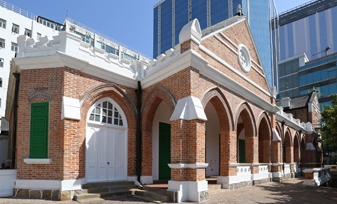The Antiquities and Monuments Ordinance was enforced in 1976 to ensure that the best examples of Hong Kong's monuments are under appropriate protection. In the same year, the Antiquities Advisory Board (AAB) and the Antiquities and Monuments Office (AMO) were established. The AMO, which provides secretarial and executive support to AAB in conserving places of historical and archaeological interest, is the executive arm of the Antiquities Authority.
The AMO comprises two major units, namely the Heritage Conservation Unit (HCU), and the Technical and Advisory Unit (TAU), under the organisation below:
The AMO’s scope of work mainly covers:
- identifying, recording and researching on buildings and items of historical interest and significance;
- organising and co-ordinating surveys and excavations of areas of archaeological significance;
- maintaining and developing archives of written and photographic materials relating to heritage sites;
- organising the protection, restoration and maintenance of declared monuments;
- assessing and evaluating the impact of development projects on heritage sites, as well as carrying out appropriate mitigation measures;
- arranging adaptive reuse of suitable historic buildings;
- fostering public awareness of Hong Kong's heritage through education and publicity programmes such as exhibitions, lectures, tours, workshops and setting up of heritage trails, etc.;
- managing two visitor centres and about 40 historic buildings for public viewing;
- establishing 3D survey records for declared monuments and graded historic buildings under the AMO’s management; and
- providing secretarial support to the AAB.
Introduction



